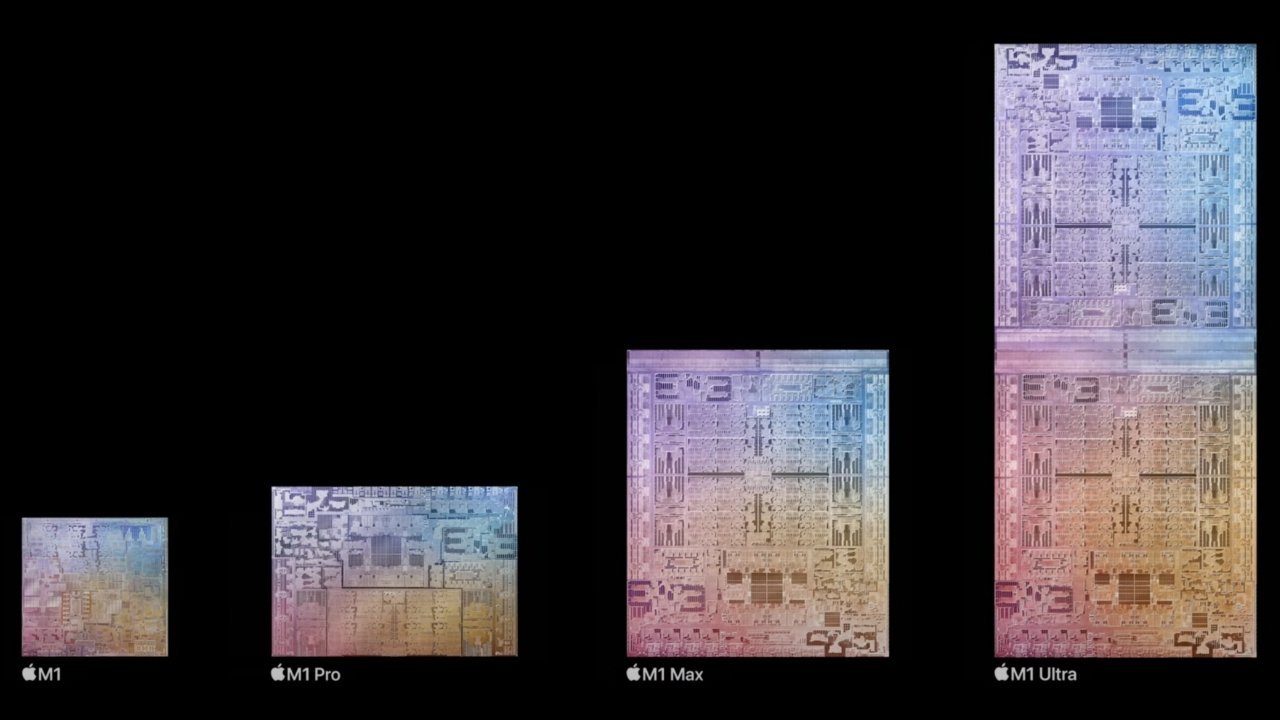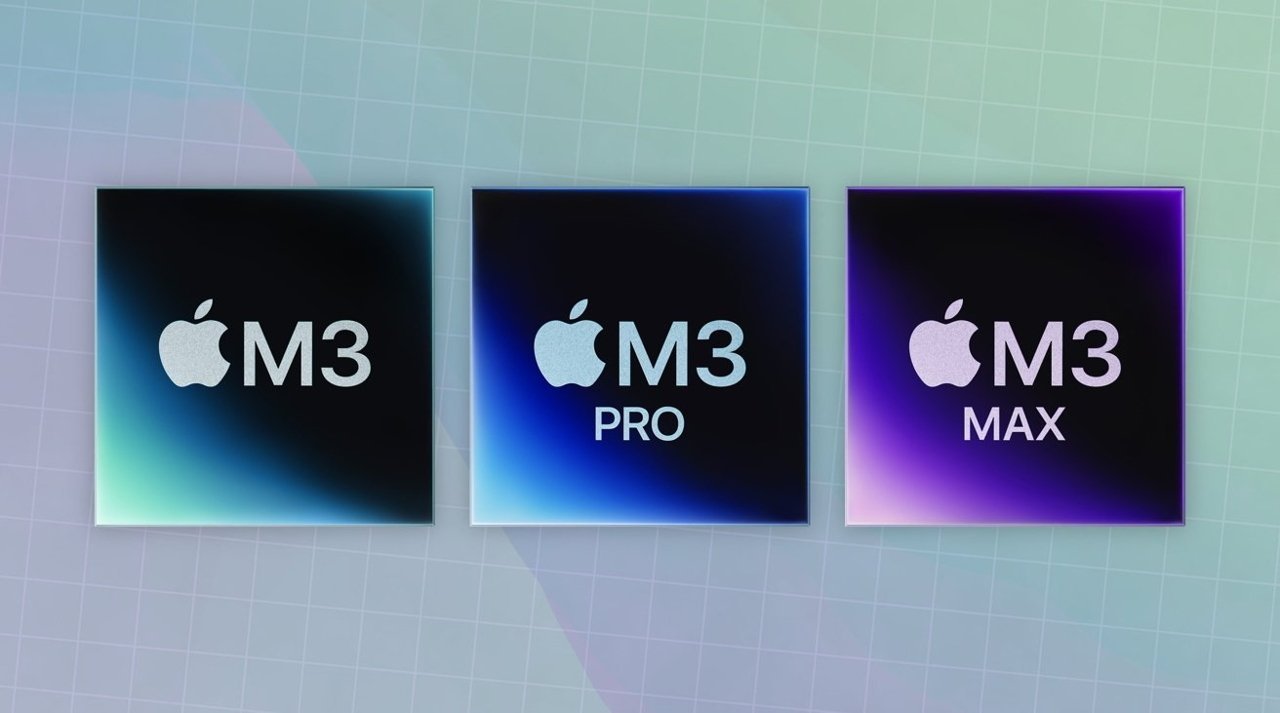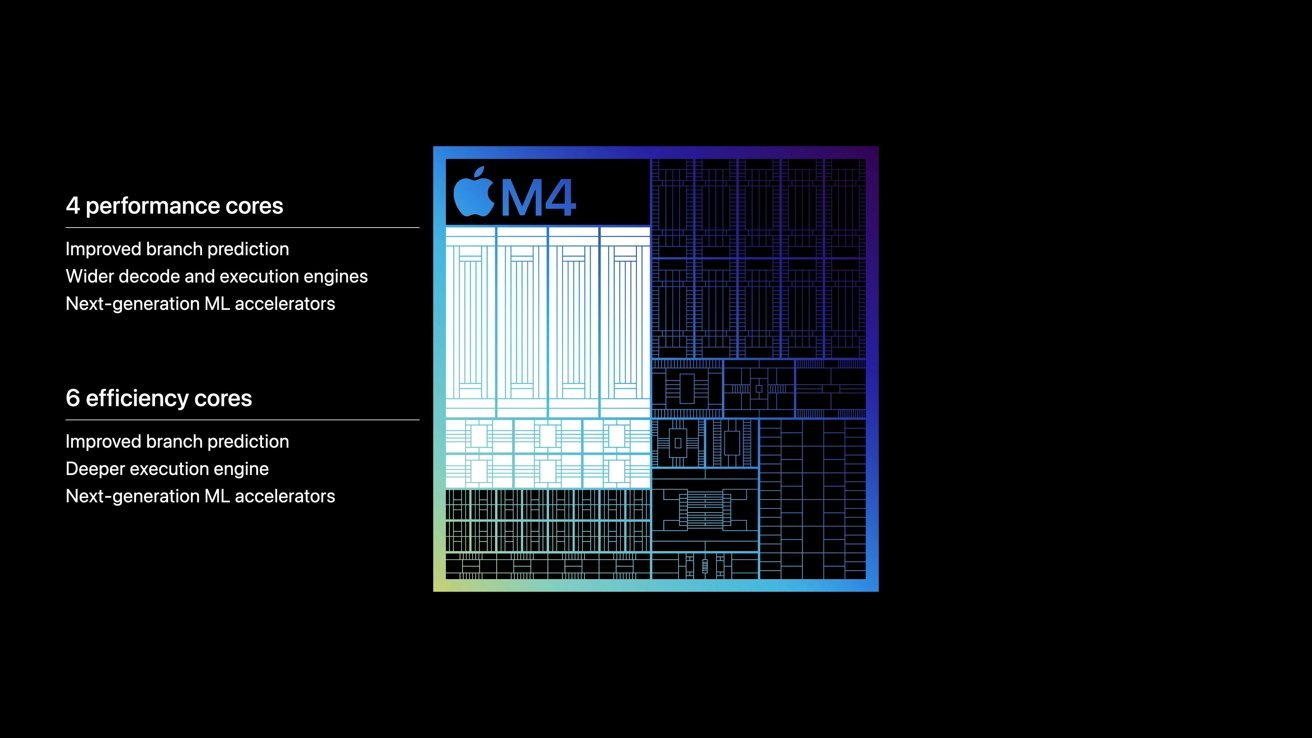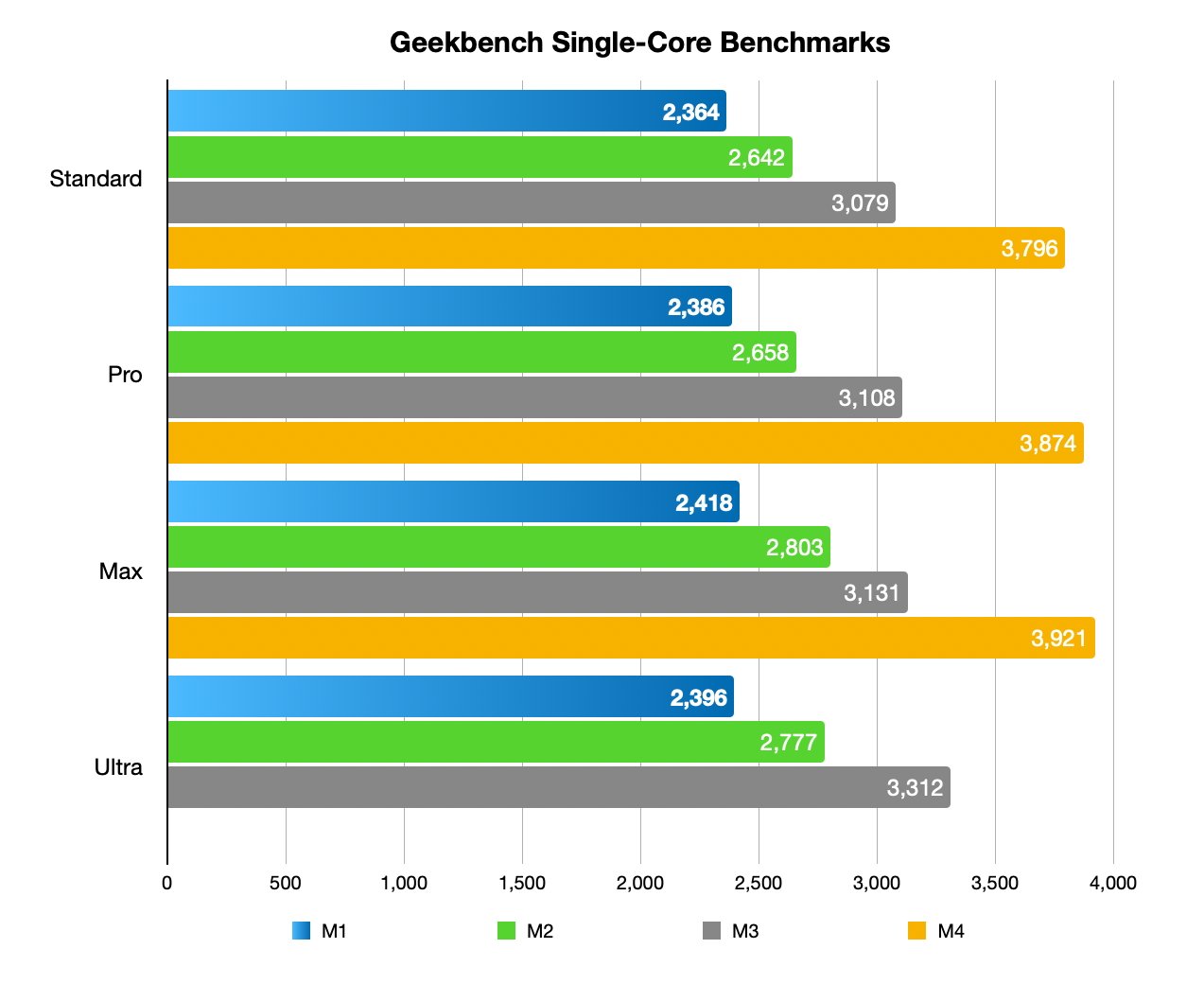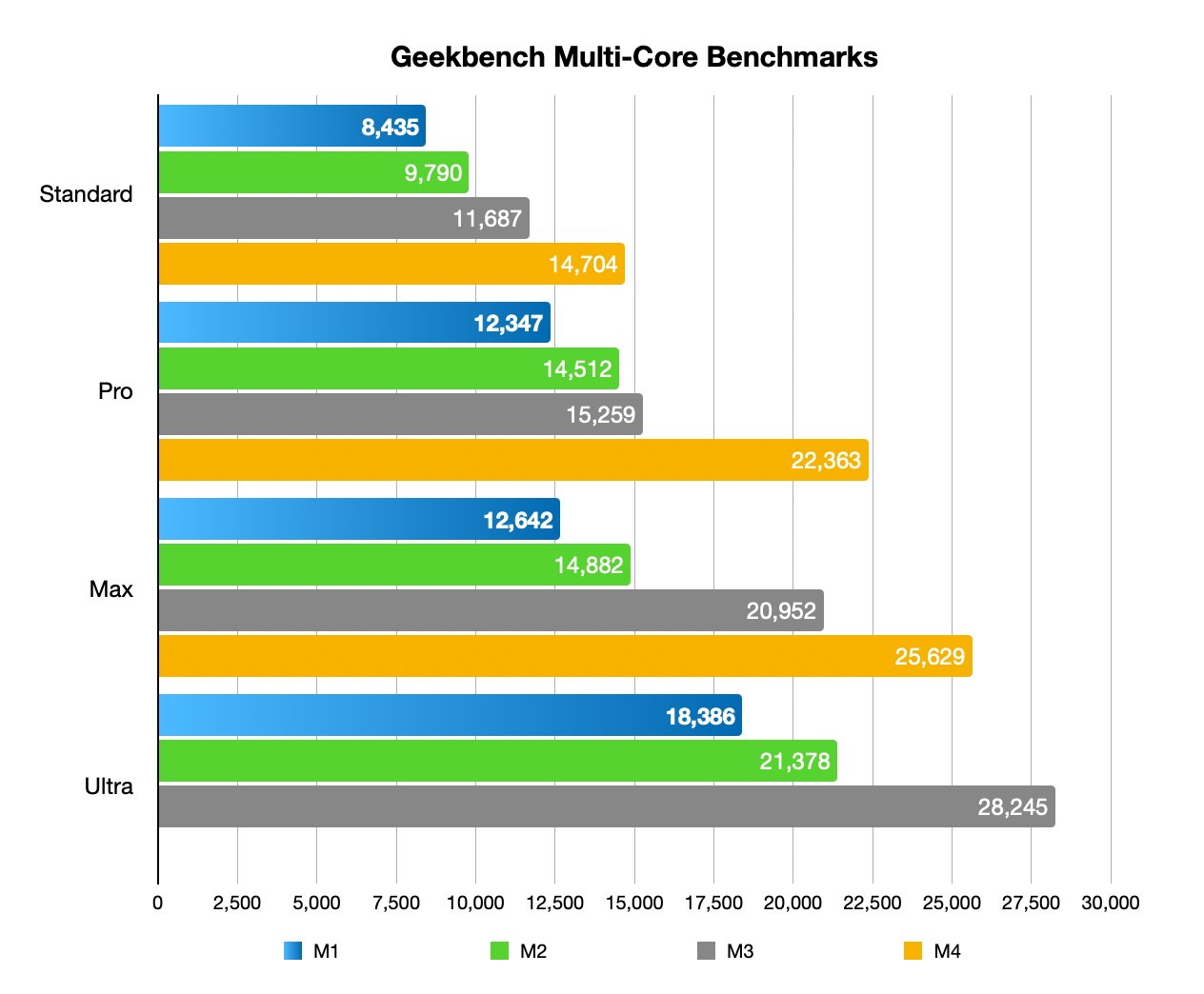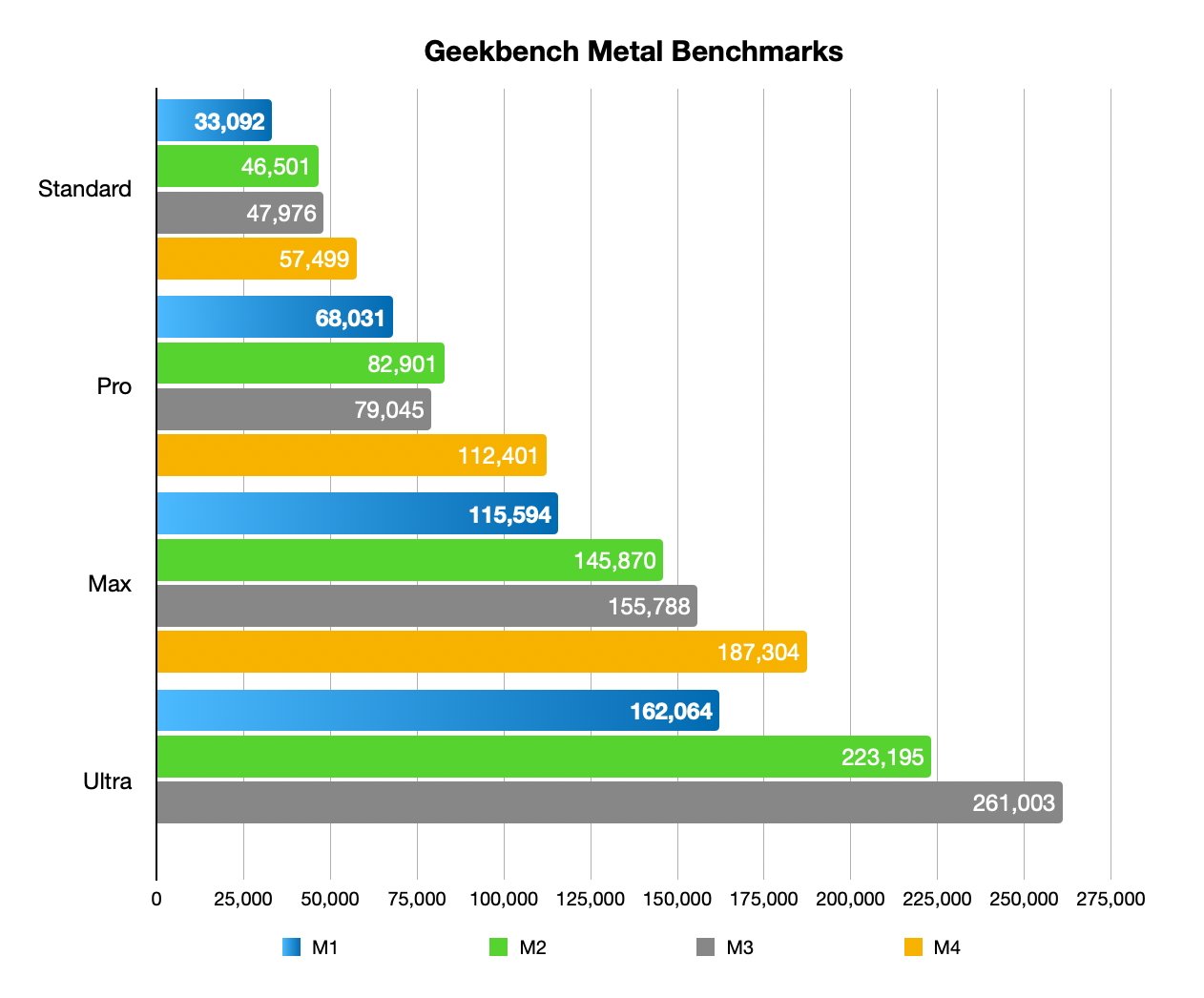We’re creeping up on the five-year anniversary of Tim Cook’s Apple Silicon announcement, and over a decade of rumors. Here’s how the whole saga started, how it launched, and what to expect in the future.
After years of dealing with Intel’s chip limitations, Apple introduced the move to Apple Silicon during WWDC 2020. The effort of ditching a well-used architecture would see Apple shifting to its new line of designed in-house chips for its Mac and MacBook catalog, starting later that same year.
That two-year transition from Intel to Apple Silicon started a major change for the company, as well as the industry at large. Beyond claims of high efficiency designs paired with high levels of performance, which you would expect from a chip launch.
Apple Silicon also introduced the most forward-looking feature of its iPhone chips to desktop. The addition of the Neural Engine in its M-series chips was groundbreaking, and forced the rest of the computing industry to consider moving in similar ways with their own processor choices.
The chip fundamentally followed the basic idea of a processor with a built-in GPU, which was and still is a fairly conventional concept in processing. The Neural Engine certainly added more performance in tasks that could benefit from machine learning, but another change from the norm also helped.
Rather than using discrete memory pools for the CPU and GPU, as well as other components, Apple decided to use Unified Memory. This went against the usual concept by using a single large pool of memory that all of the CPU elements could access.
The idea helped performance in multiple ways, including allowing the components to access the same data in memory without needlessly duplicating it.
There’s also the benefit to the GPU in that the more Unified Memory was included, the more memory it had access to for graphical work. This allowed the GPU in Apple Silicon to have access to a lot more memory than you could find in modern discrete GPUs or graphics cards for PCs.
While the introduction of Apple Silicon at the time focused on the M1 and M-series chips destined for Mac usage, the term has expanded in its use. It now refers to all of Apple’s main processing chips, including its A-series used in the iPhone and iPad lines, which were also the forerunners for the M-series range.
Apple Silicon is everywhere, it’s not just processors, and it’s not just in the Mac. But, to keep things simple this time around, we will be discussing Apple Silicon from the original Mac-centric viewpoint.
But even just taking the M-Series on its own, the progress Apple Silicon has made since its introduction has been staggering, and industry-challenging.
Pre-Apple Silicon: Trouble with Intel
Apple’s decision to make its own chips was driven by considerable issues the company had with Intel.
In the 2010s, Intel was a major computing force. It was a status it had earned for years, but it wasn’t something the chip maker could maintain.
Keeping up with Moore’s Law was extremely hard for Intel to continue, due to the constant die shrinks it required. Each new process improvement added new obstacles, while subsequent die shrinks continued to be harder to perfect.
Eventually, Intel dismissed its well-known Tick-Tock cadence of a process change (Tick) was followed by an architecture update within that process (Tock). Instead, by 2016, Intel had switched to a Tick-Tock-Tock strategy, tacking an optimization phase on the end to get more out of a process before shrinking to the next one.
Inevitably, the delays on die shrinks, such as the introduction of 10-nanometer Intel chips, was too much for Apple to deal with.
This was only one of the issues Apple faced with Intel, with the heat generated from chips and high power consumption being big problems that only grew bigger. In 2018, it resulted in thermal throttling issues affecting that year’s MacBook Pro updates.
The throttling was severe enough to be an issue, and exacerbated by bad firmware. Consumers quickly caught on.
Following our own testing, AppleInsider’s Mike Wuerthele discussed the throttling at length on Leo LaPorte’s The New Screen Savers.
Notably, Mike said that what would ultimately be called Apple Silicon would debut in 2020 on the low end of Mac hardware.
There were rumors going back years before that Apple was bringing more of its mobile chip work internally, including some going as far back as 2011. A move over to Mac chip development was seemingly inevitable as Apple’s experience continued to grow.
Certainly, it had barriers to traverse to get there, but over time, it had the knowledge and capability to go its own way from Intel.
It seems that Intel’s faltering relationship with Apple gave the iPhone maker more of an incentive to make the jump to Macs.
It had already mastered managing the thermal and power needs for its own chips to extend iPhone battery life and keep the smartphones from overheating. It made sense that its knowledge could be used on desktop-class processors to great effect.
Working with long-time chip partner TSMC, that’s precisely what Apple did.
M1: The original releases
The first Apple Silicon hardware Apple introduced after Tim Cook’s announcement wasn’t one with an M1 chip. Really, it was an A-series chip.
The Developer Transition Kit was handed out as a customized Mac mini, gutted of Intel components and instead filled with Apple Silicon hardware. The center of that was the Apple A12Z Bionic, which is an apt choice as the most-powerful A-series chip, and very similar to what developers could expect from the first official ARM-based release.
The M1 series started off with the M1, made using a 5-nanometer process. It had 16 billion transistors, four high-performance cores and four energy-efficient cores, and a seven or eight-core GPU.
As for the Neural Engine, it was a 16-core component capable of 11 trillion operations per second. While the memory quantities were low at 8GB or 16GB, they also worked with 68.25GB/s of memory bandwidth, glacial compared to modern versions.
It took almost a year for Apple to ship M1 Pro and M1 Max chips, which brought more power and performance.
The Pro had either six or eight performance cores in the CPU along with two efficiency cores. The Max version had eight performance cores and four efficiency cores.
The GPUs on each also saw core count increases, of 14 to 16 on the Pro and 24 to 32 on the Max. The Neural Engine stayed the same, but the memory bandwidth shot up to 200GB/s and 400GB/s respectively.
Another addition that the M1 chip missed out on completely was the Media Engine, or dedicated hardware for decoding and encoding video. This feature made the M1 Pro and later chips fantastic for video editors and content creatives, especially those working on the industry standard ProRES.
A very late arrival in March 2022 was the M1 Ultra, another groundbreaking chip in a different way. Using an interconnect, Apple effectively welded two M1 Max chips together, creating something that was twice as powerful in practically all respects.
That meant up to 16 performance cores on the CPU along with eight efficiency cores, a GPU core count of up to 64 cores, and a 32-core Neural Engine. As it’s two chips attached together, it made sense that it had two of everything the Max offered.
As the line and core counts grew, you could also see an increase in performance. The capabilities of each core didn’t increase, but the sum total was even more beneficial to end users.
Using the latest Geekbench results, it’s easy to see this progression in performance. For comparison purposes, we are using the top score for each chip, regardless of core counts or model.
The single-core test had all four around the same sort of level, below or around 2,400 points. This makes sense, as the test uses only one fast core, and they’re pretty identical across the board for the generation.
The multi-core benchmarks start to show some differentiation, and this is primarily due to the sheer number of cores at play for each. The more cores to use, the higher the score.
This is a lot more evident with the Metal benchmarks, since they rely on GPU core counts. There are considerable jumps between each chip tier here.
M2: The next generation
Launched in June 2022, the M2 series started off in a similar way as the M1, with the introduction of the base-tier chip. Again, a 5-nanometer process was used, but Apple increased the transistor count to 20 billion from the 16 billion of the M1.
The CPU continued to have a four-performance, four-efficiency core split, but with the cores offering performance improvements over the previous generation. The GPU also benefited with options up to 10 cores in total.
The Neural Engine was beefier, with its 16 cores capable of 15.8 trillion operations per second. Memory bandwidth was also increased to a round 100GB/s.
Following its established playbook, the M2 Pro and M2 Max arrived in January 2023. Again, there were more cores to play with, as the M2 Pro had six or eight performance cores and four efficiency cores, while the Max had eight performance and four efficiency cores.
The GPU options also scaled up, with 16 to 19 on the Pro and 30 to 38 cores on the Pro Max. The same level of memory bandwidth upgrades for their respective tiers were present again.
It took until June for Apple to bring out the M2 Ultra. Once again fusing two M2 Max chips together, it had 16 performance cores, eight efficiency cores, a 32-core Neural Engine, up to 76 GPU cores, and used 134 billion transistors.
The memory allowance was also phenomenal, with it able to use up to 192GB. All benefiting from up to 800GB/s of memory bandwidth.
On a performance basis, the single-core performance was better overall, but with little differentiation once again. The multi-core score shows a lot more, with the M2 Pro and M2 Max being fairly close in the middle.
Once more, the GPU side shows the M2 Ultra as being massively performative. This made it a favorite for visual creators for quite some time.
M3: The difficult third album
By the third generation, the tech media was used to how Apple introduced its new Apple Silicon releases. Or at least it thought it understood the cadence of releases.
The October 2023 introduction of M3 was very unusual, chiefly because Apple didn’t just introduce one M3 chip. It brought out the Pro and Max versions at the same time.
With the use of a new 3-nanometer process, and 25 billion transistors, the M3 offered a very familiar make-up for users. There was the eight-core CPU with four performance and four efficiency cores, just like last time, and a 10-core GPU at the top end once again.
While seemingly similar at this point, there were differences. Apple itself insisted that the CPU and GPU improvements were 35% and 65% better respectively versus the M1 chip.
The Neural Engine also gained some performance, with the 16-core component upgraded to run at up to 18 trillion operations per second.
One big change this time was a technology called Dynamic Caching, which allowed the GPU to allocate the use of local memory in hardware in real time. This meant it could allocate only the amount of memory it needed, increasing utilization.
The GPU also gained hardware-accelerated ray tracing and mesh shading. This helped produce visually complex scenes in games and other graphical applications.
The M3 Pro and M3 Max did differ quite a bit from the norm, as Apple differentiated the CPUs more than normal. The Pro had an 11-core or 12-core CPU, with either five or six performance cores paired with six efficiency cores.
The M3 Max had either 10 or 12 performance cores, along with four efficiency cores. As well as having more cores than the Pro, the M3 Max had fewer efficiency cores to deal with.
Memory bandwidth was a bit of a step back for this generation. The 150GB/s and 300GB/s rates this time around were lower than their M2 counterparts.
When it came to the GPU, the M3 Pro had 14 to 18 cores, while the M3 Max had 30 to 40 GPU cores.
The M3 Ultra was even more of a mystery, as it didn’t arrive in a timely manner. Rumor mill speculation questioned whether the chip was killed off in favor of a quicker shift to the M4 generation.
It did eventually turn up, though, in March 2025. This was months after the release of the M4 Pro and Max, the next generation along.
Just as usual, the M3 Ultra is made by sticking two M3 Max chips together as one. This meant CPU core counts of 28 or 32 cores, with either 20 or 24 performance cores paired with eight efficiency cores.
A 32-core Neural Engine was also included, as well as a 60 or 80-core GPU. The memory capacity jumped up to 512GB of unified memory and offered 800GB/s of memory bandwidth.
When it comes to the performance graphs, the main thing to look at is the multi-core results. Unlike the M2 and M3 generations, you can see a considerable separation between the M3 Pro and M3 Max chips.
M4: A continuation of growth
The M4 is the current generation of Apple Silicon for Mac, and the highest performance of the collection.
Introduced in May 2024, the M4 used a three-nanometer process and squeezed in 28 billion transistors. It was a nine or ten-core CPU, with either three or four performance cores mixed with six efficiency cores.
There was a ten-core GPU with the same upgrades as the M3 version and a 16-core Neural Engine capable of 38 trillion operations per second. Memory bandwidth improved to 120GB/s.
The M4 Pro pushes the specs to either a 12-core or 14-core CPU with eight or ten performance cores and four efficiency cores, as if Apple learned its lesson from the M3 Pro. The M4 Pro GPU was available in 16-core and 20-core varieties, with memory bandwidth up to 273GB/s.
The M4 Pro also improved on the M4 by upgrading its Thunderbolt support, from Thunderbolt 4 to Thunderbolt 5. This meant more bandwidth for data transfers between devices, at 80Gbps versus 40Gbps.
The M4 Max went even further than the M4 Max, with a choice of 14-core or 16-core CPUs with 10 or 12 performance cores and four efficiency cores. The GPU rose to a 32-core or 40-core version, and memory bandwidth went up to 546 GB/s.
At the time of reporting, there isn’t an M4 Ultra, and one isn’t expected. Apple itself says that not every Apple Silicon generation will have an Ultra chip, so there are no guarantees one will be on the way.
On a performance basis, the single-core results are again fairly even, with the Max being slightly above the rest.
The multi-core test is, again, showing a progression in performance that’s driven by core counts. Though this time, the difference between Pro and Max is slightly less pronounced than the M3.
Unsurprisingly, the Metal results show the same sort of core count-based result. The more cores, the higher the result.
From M1 to M4
Apple has demonstrated that it has improved Apple Silicon as the generations passed. Newer versions saw benefits over the older version in almost all cases, with a few inter-generational wobbles.
The main changes over the years were core speeds and core counts. That is handily demonstrated by comparing all of the single-core results in one chart.
You can see an improvement of 60% between the base M1 and M4 chips, rising to 62% for the M1 Max and M4 Max. Indeed, you can see quite neat intergenerational jumps between the versions.
When you turn to the multi-core scores, it’s obvious that clock speed is only one factor. Core count increases can also magnify the differences.
The base M4 is 74% faster than the M1 equivalent, but upper tiers see more growth. By the time you compare the M1 Max and M4 Max, the improvement rises to 203%.
Turning to graphical performance under Metal, the biggest gains happen to be with the base versions. There’s a 74% difference in Geekbench Metal scores between the M1 and M4 chips.
That’s not to say the others are lesser, as the Pro and Max see 65% and 62% equivalents in a three-generation difference. Even the two-generation jump from the M1 to M3 Ultra is a 61% improvement.
One thing that is very apparent looking at the charts together is that the upgrades are fairly consistent across the generations. There’s roughly the same level of improvement each time, which bodes well for the future.
The next five years
If Apple’s anything, it’s both punctual and a creature of habit. That is to say, what will be arriving in the next few years for Apple Silicon should be more of the same.
Quasi-annual improvements across the board, and the same sort of generational structure as it has now. Spotty additions of Ultra chips aside.
The M5 generation is expected to be arriving soon, with it allegedly already in mass production. As for what the new thing could be this time, it’s been speculated that Apple will shift to separate the CPU and GPU, which could further improve performance.
There’s even been claims about the M6 taking onboard Apple’s modem tech into an all-in-one solution for mobile devices. Think cellular connectivity on a MacBook Pro without needing to tether to an iPhone.
While we don’t know what the future will precisely hold for Apple Silicon, we can confidently say that it will still be getting better as time rolls on.
This story originally appeared on Appleinsider


